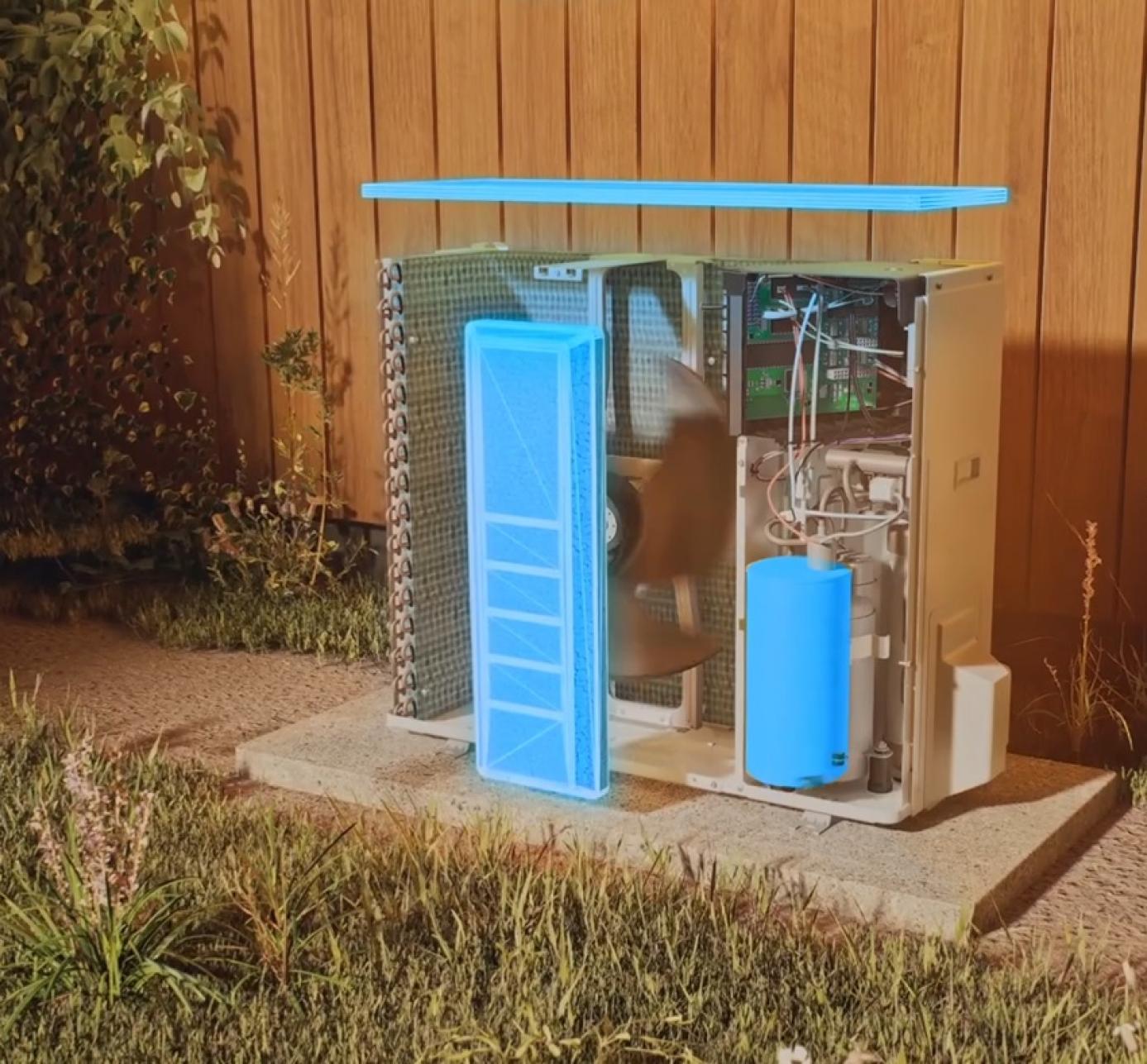
Welcome to the neighbourhood!
22.08.2023
People-friendly heat pump solutions
Heat pumps have been hailed as the number one heating and cooling solution in a fully decarbonised Europe, playing a central role in a renewable, sustainable and smart energy system. The European Heat Pump Association estimates that meeting the EU’s heat pump targets will reduce heating bills by 20%, help to tackle energy poverty, reduce gas imports and boost health and jobs towards a sustainable planet growth*.
It's no wonder that governments are incentivising both air-to-air and air-to-water heat pumps as a way to phase out gas boilers and reduce our reliance on fossil fuels. But alongside their environmental benefits, there is a need to consider the impact on people living close to these devices. Heat pumps can be noisy, especially if multiple units are installed together or if they are placed on reflective surfaces. And as they grow in popularity, manufacturers are seeking the most effective ways to reduce noise levels.
Where does heat pump noise come from?
To understand how they produce noise, it helps to understand how a heat pump works. At its most basic, a heat pump is a device that transfers heat from one location to another. Heat is sourced from the natural environment (ground, air, groundwater, etc.) and, using a reverse refrigeration cycle, is transferred through an evaporator, compressor, condenser and finally to the space or water to be heated. A four-way valve in the refrigeration circuit allows the system to switch between heating and cooling modes.
In both air-to-air and air-to-water systems, noise is created by rotating components during normal operation. Both types of heat pump have an external unit with a fan. An air-to-air system, which uses outdoor air for indoor cooling or heating (HVAC), also has an internal unit with a fan. An air-to-water system (which heats indoor space and water) has an internal unit with a pump. Both types use a compressor to move refrigerant around the system – another possible source of vibration and noise.
Rising to the challenge with Silentium® *
Recticel Engineered Foams is tackling the issue of heat pump noise with tailored solutions using our proven Silentium3+ approach.

Originally developed for the challenges of industrial equipment, Silentium3+ is a three-step strategy implemented by acoustic engineers in cooperation with the client. Together, they analyse the specific machine, diagnose the causes of noise and define the ultimate solution.
Step 1 treats noise and vibrations at the source. In heat pumps, the possibilities include damper mounts under the compressor or at the base of the fan or pump to isolate vibrations. We also develop compressor jackets, blankets and covers and mass spring solutions which may be made from bonded foam or foam with a heavy mass layer.
Step 2 addresses noise inside the equipment. We provide thermo-acoustic solutions for the heat pump enclosure to minimise thermal losses and noise transmission, as well as viscoelastic damping materials. Acoustic absorption is also analysed and treated in this step.
Step 3 minimises, or ideally prevents, noise exiting the equipment. This is achieved with acoustic baffles (louvres) and sealing solutions applied to the doors and the interfaces between different panels.
People and planet-friendly technologies
Recticel Engineered Foams has always innovated to support healthy, sustainable lifestyles, reduce carbon emissions, preserve natural resources and support a circular economy. Our heat pump solutions are just one of a range of innovations to support designers and manufacturers of the technologies that will define the future and bring us all closer to net zero.
To learn more about Silentium3+, download the brochure
Explore solutions for Industrial equipment, including HVAC systems
* Silentium® is a trademark of Recticel Engineered Foams registered in Europe.